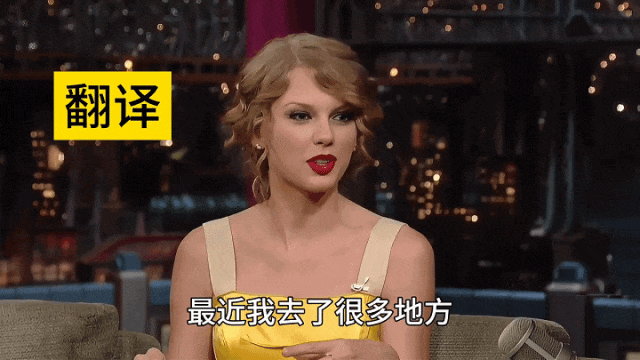Why did a Peking University paper on China’s tech deficiencies get deleted?
The prestigious university’s Institute of International and Strategic Studies published, and then took down, a paper looking at the state of advanced technologies like AI and semiconductors in China. What happened and what does it mean?

How far advanced is Chinese tech? Not very much, according to a recent researched study on the impact of U.S.-China decoupling. Authored by the U.S. hand Wáng Jīsī 王缉思 and his team at Peking University’s Institute of International and Strategic Studies, the paper was taken off the web after less than a day. While a full evaluation of the study’s findings remains difficult without access to the longer version, an eight-page summary remains available.
The report was, presumably, deemed too negative by the powers that be. The authors painted a picture of China as vulnerable and dependent on Western technology in key sectors such as semiconductors, AI, and aerospace. Over the past three years, sensitivities around decoupling have gone through the roof as the U.S. cut off select Chinese firms from access to U.S. technologies such as the leading foundry Taiwan Semiconductor Manufacturing Corporation (TSMC). Despite Beijing’s aversion to public displays of weakness, the Peking University paper paints a very accurate picture of China’s vulnerabilities in the technology space. It also offers actionable items to avoid the worst downsides of decoupling.
The deleted paper: A well-written assessment of the impact of decoupling on key Chinese tech sectors
Whereas the Peking University study may overstate China’s weaknesses, it is a breath of fresh air compared to many U.S. commentators — from current and former U.S. government officials to U.S. think tanks like the Harvard’s Belfer Center — who have chronically overstated the strength of Chinese tech. The reality lands somewhere in the middle. The future development of key technology sectors in China and the U.S. depends on a host of factors: they include whether the U.S. and its allies continue to ratchet up technology and financial controls, whether Chinese STEM students and researchers abandon pursuing advanced degrees and job opportunities in the U.S., and on the overall state of U.S.-China relations in the coming three to five years.
The paper is evenhanded in its diagnosis. On the one hand, China has made great strides, for example, in publishing peer-reviewed scientific papers, as well as developing an efficient funding pipeline for innovative companies. On the other hand, China lags significantly behind in overall metrics of innovation, things like research citations, the quality and depth of patents, contributions to standards development, and the quality of STEM researchers that graduate each year. These findings are largely consistent with Western observers. Because the U.S. continues to be attractive for STEM students, researchers, and professionals, the Peking University paper concludes that China has a long way to go in its journey from a “large technology power” (科技大国) to a “strong technology power” (科技强国).
The authors claim that “national innovation is a dynamic and systematic project,” one that involves a constellation of participant from governments to industry to academia. But they leave out the role of global supply chains in the innovation process. In the document available, too little emphasis is placed on the role of markets, well-developed legal systems and IP protection, and trust in driving highly competitive industries such as semiconductors. In a similar vein, Western studies of China’s technology sector tend to overlook these same factors, attributing an outsized role instead to government policies and state subsidies.
China will not leapfrog the U.S. in semiconductors and AI
How will the decoupling of specific technology sectors impact Chinese and U.S. companies? As usual, the devil is in the details. But understanding where Chinese companies stand, at present, in terms of technology, talent, product road maps, and integration into the global semiconductor value chain is critical to debates around China’s technological superiority. These factors are usually absent from sweeping Western takes on China’s inexorable path to world dominance in this or that sector, based largely on readings of aspirational national plans. This is a mistake.
Take, for example, the semiconductor industry. Most Western progostications of Chinese self-reliance or even “dominance” in this space fail to confront reality. Across the supply chain, Chinese semiconductor firms lag behind their U.S., European, and Asian counterparts. Most are far from catching up, let alone surpassing them, due to a high levels of interdependence and a global division of labor. (See here for more details.) On AI, the authors reiterate a commonly held assesment: The U.S. has the computing power and the algorithms; China has the data. The U.S. has paper publications and a strong hardware base for AI in semiconductors; China leads in perception AI such as facial recognition, computer vision, and speech recognition. This has not changed much since Kai-Fu Lee and I compared AI developments in the U.S. and China in 2017.
Yet the paper finds that 88% of Chinese who have gone to the U.S. to study AI have been employed after graduation, with only 10% returning to China. That fact alone might rankle Chinese tech planners and political leaders, but the paper goes even further. They observe the difficulties, on the part of Chinese ministries and other AI industry representatives, to shape international standards around AI and other technologies. This is an accurate assessment. Many recent Western papers and articles assert that “China” wants to dominate a certain standards-setting process, often based on initiatives like “China Standards 2035,” but there is a conflation here between aspiration and reality.
Chinese companies want to operate in standards bodies such as 3GPP or ISO. The drive to shape international standards — part of the “right to speak” (话语权) — reflects long-standing concerns that Chinese representatives were not at the table to help set the rules of the game for the global internet. The Chinese government wants to make sure that this does not happen in other internet and communication technology (ICT) spheres, now that China has become a technology power with a sizable market and leading technology companies, including in AI. Meanwhile, for the West’s part, they note an effort to establish “democratic technology alliances” of “like-minded” countries in the regulatory and standards-setting space, which they claim is aimed to limit the application of AI technology developed by Chinese companies and their ability to compete in global markets.
Lately, the public has begun to discuss issues around technology with more nuance, going beyond the simplistic story of “China trying dominating AI.” The Peking University study is a welcome addition to this growing body of work.
Why did the study get taken down?
Why did the study get taken down? Part of it is the frank admission of weakness. But the article also raises a provocative yet fundamental question seldom raised by Chinese academics, at least in such a public way: can China pave its own technological path after it has forsaken the U.S. as a guide point?
This is likely the crux of the problem Chinese political leaders have with the study. By speaking of the future of decoupling in such uncertain terms, the authors may have put China’s recent national plans, sectoral strategies, and aspirational goals for innovation into jeopardy. And the study does not appear to tackle more sensitive political issues likely to continue to make decoupling in the semiconductor arena even more problematic, such as the U.S. pressure on Taiwan being used as an manufacturing base for leading Chinese technology firms.
In sum, the Peking University paper represents a landmark admission of the shortcomings of China’s science and technology system, a more sober and realistic assessment than is typical of Western analyses, which over-emphasize competition rather than interdependence, “dominance” over gap-closing and moving up the value chain. It is a welcome counternarrative to the view that China can achieve self-sufficiency without any obstacles.
Great power competition is a dangerous game. When it comes to the complex issue of technology — which involves global supply chains that almost never break down neatly across national borders — transparency and honesty are cardinal virtues. It is unfortunate that this type of frank study will likely become increasingly difficult to conduct and publish in China precisely when we need it most.






